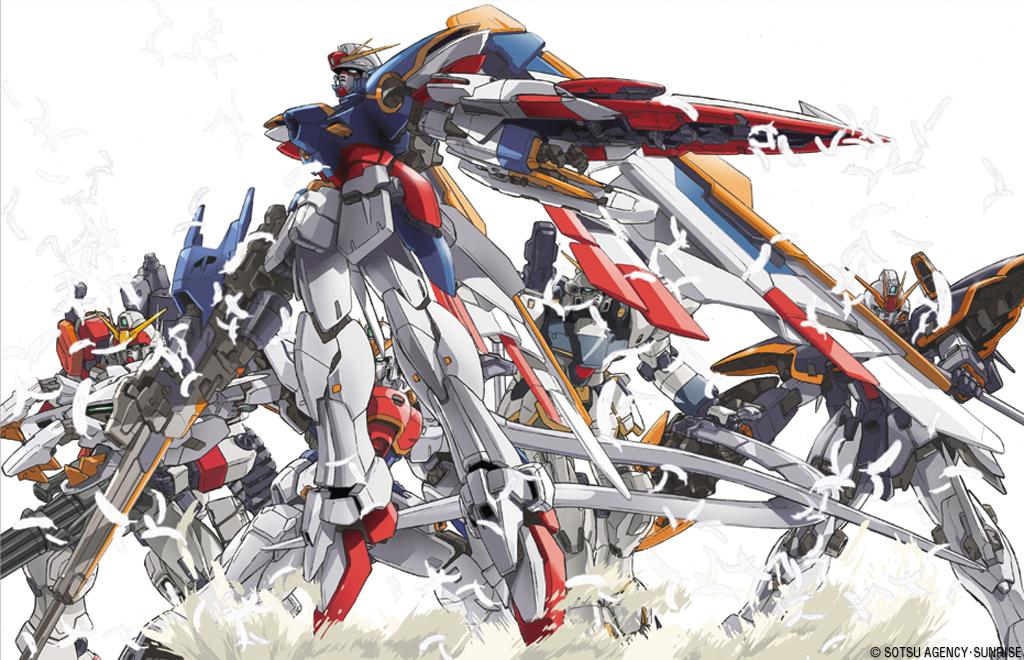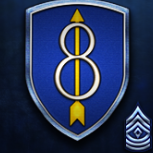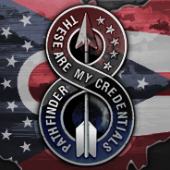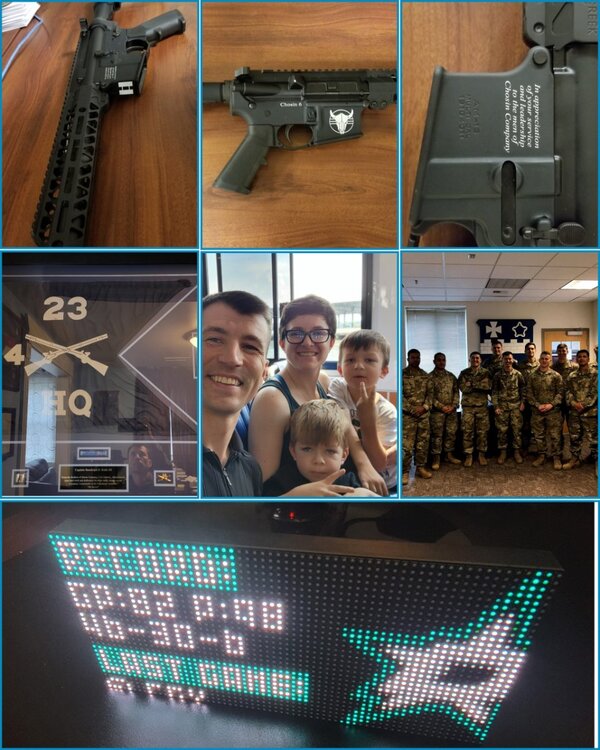-
Posts
287 -
Joined
-
Last visited
-
Days Won
27
Rotte last won the day on August 23 2023
Rotte had the most liked content!
About Rotte
- Birthday 02/27/1989
Personal Information
-
Location
West Point, NY
Recent Profile Visitors
9,942 profile views
Rotte's Achievements
-
Name: Rotte Role: DPS/Tank
-
Don't think the argument holds up right now 😬
-
-
So you all went sentimental on me! I was going to be simple and just put in my NHL scoreboard that I built and programmed last year that sits on my desk and gives me live updates on the Stars and all around the NHL (bottom picture). In the center is my wife and kids from a few weeks ago. My sons Andy (7 with the peace sign) and James (4 in middle) are wonderful little guys and I'm very lucky they've turned out so well. Of course, my wife in the center is someone I don't deserve and who I work everyday to try and be a good husband to. My other two great accomplishments were commanding, at least somewhat well, two different companies of Soldiers in the Army. The middle right is all the Sergeants and Staff Sergeants who were my squad leaders and who I leaned on heavily to make things happen. I worked daily to earn their respect. The middle left is my going away gift from my second command where I led a headquarters company full of staff officers and Soldiers. The top three are my going away gift from my first company that caught me completely by surprise and is one of my most treasured possessions.
-
Public Affairs Liaison: Capt. Samuels 8th ID Leader: F/Sgt. C. VanDoor Assistant Leader: S/Sgt. R. Montague Date: January 15th (Saturday) Time: 3PM EST / 2PM CST Practice Time(s): TBD Place: 1st MRB Mods: Standard Medic, Extra Ammo Map: Dod_Donner Extended Players: 10v10 (Will add more match day if they have them) Weapons: 1 Auto, 1 Sniper, 1 Rocket. Rounds: 5 Minute Setup/ 15 Minute Attack AVA Rules: All Rifles, 30 seconds in position max
-
Public Affairs Liaison: Major Mala [3te PGD][FG] 8th ID Leader: M/Sgt. J. Klop |8th ID| Assistant Leader: Place: 3te PGD Scrim Server 185.248.141.141:27015 Mods: Medic Class Map: dod_venteux_final Players: 12v12 Weapons: 1 Sniper, 2 Autos, 1 Rocket, 1 Medic. Rounds: 1st MRB Proportions AVA Rules: Support Stg only, no grenades, lose health if you don't move after 2 seconds. No camping!
-
Public Affairs Liaison: Major Mala [3te PGD][FG] 8th ID Leader: M/Sgt. J. Klop |8th ID| Assistant Leader: Place: 3te PGD Scrim Server 185.248.141.141:27015 Mods: Medic Class Map: dod_venteux_final Players: 12v12 Weapons: 1 Sniper, 2 Autos, 1 Rocket, 1 Medic. Rounds: 1st MRB Proportions AVA Rules: Support Stg only, no grenades, lose health if you don't move after 2 seconds. No camping!
-
I've got a bunch of multiplayer games in my steam library that I'd love to explore with other people in our unit/community. Please post whatever games you either already enjoy or would like to try with people! Already Play: -Overwatch -CSS/CSGO (prefer CSS) -League of Legends -Overcooked 2 -Squad -Insurgency: Sandstorm -Tabletop Simulator -War Thunder -Warframe Want to Play: -Borderlands 3 -Hell Let Loose -Day of Infamy -Destiny 2 -Rocket League -Rainbow Six Seige
-
The picks lock after tomorrow, get yours done within the next 24 hours!
-
December: 15 December Last month, we covered Battle of Aachen and discussed how the Allies gained their first foothold in German territory through a hard fought victory at the town of Aachen. Battle Covered The first battle for tonight is the Bombing of Dresden. In the last months of World War II, Allied bombers from the British Royal Air Force and the United States Army Air Force conducted several major bombing raids on the eastern German city of Dresden. One tactic used by the Royal Air Force and the United States Army Air Force at the time was the creation of firestorms. This was achieved by dropping incendiary bombs, filled with highly combustible chemicals such as magnesium, phosphorus or petroleum jelly (napalm), in clusters over a specific target. After the area caught fire, the air above the bombed area, become extremely hot and rose rapidly. Cold air then rushed in at ground level from the outside and people were sucked into the fire. In 1945, it was decided to use this tactic in the medieval city of Dresden. According to the RAF at the time, Dresden was Germany's seventh-largest city and the largest remaining unbombed built-up area. The Allies considered it a good target as it had not been attacked during the war and was virtually undefended by anti-aircraft guns. The population of the city was now far greater than the normal 650,000 due to the large numbers of refugees fleeing from the advancing Red Army. Beginning on the night of February 13, 1945, more than 1,200 heavy bombers dropped nearly 4,000 tons of high-explosive and incendiary bombs on the city in four successive raids. During the next two days the USAAF sent over 527 heavy bombers to follow up the RAF attack. Dresden was nearly totally destroyed. An estimated 25,000 people were killed in the bombings and the firestorm that raged afterward. More than 75,000 dwellings were destroyed, along with unique monuments of Baroque architecture in the historic city center. This raid has been widely criticized and questioned since its occurrence as to the actual relevance to the German war effort, some going as far as to call it a war crime. In March of 1945 a German raiding force from the Channel Islands launched a daring attack on a port in Allied-occupied France. Granville, Manche, France was the site of a prisoner of war camp. In December 1944 four German paratroopers and a Naval cadet escaped from the camp, eventually stole an American LCVP landing craft, and made their way to the German occupied Channel Islands. They reported that several ships were in the harbor at Granville discharging coal, which was in short supply in the beleaguered Islands. They also reported on the disposition of American troops in the area. The new garrison commander of the Channel Islands used the intelligence to plan a raid against the Allies to restore morale to his garrison and obtain needed supplies. On the night of February 6th 1945, a first attempt was aborted, due to a combination of bad weather and the detection of an escorting Schnellboot ("E-boat"), by a US Navy submarine. The raid was carried out on the night of 8 March. The raiding force comprised four large M class minesweepers, three armed barges carrying 8.8 cm guns, three fast motor launches, two small R type minesweepers, and a sea-going tug. As the Germans had received intelligence regarding the identification signals needed to enter the harbor, they were initially able to land unopposed. They damaged the harbor locks and started fires on shore. The Germans mined the British-registered merchant freighters Kyle Castle, Nephrite, Parkwood and the Norwegian freighter Heien. Outside the port, a submarine chaser, raised the alarm and was attacked by German vessels. About 14 US Navy personnel were killed in action, others were wounded, its 3-inch gun was disabled and the pilot house destroyed. The captain gave the order to abandon ship, but he and other crew members remained on board, and managed to evade the Germans, before intentionally grounding on the shore. Some claim that 30 Allied personnel were taken, as prisoners to the Channel Islands, including 15 of those who had earlier abandoned ship. Allied resistance caused significant delays to the German raiders. By the time they were ready to depart, the tide was so low that only one captured collier containing 112 tons of coal, could be taken back to the Channel Islands. A German minesweeper ran aground and was scuttled with explosives. With that, we will now talk about how the war closed out. I’ll bring the Pacific and Russian actions into the fold and complete the war from there. June 22, 1944, the Soviets launch a massive offensive in eastern Belorussia (Belarus), destroying the German Army Group Center and driving westward to the Vistula River toward Warsaw in central Poland by August 1. August 23, the appearance of Soviet troops on the Prut River induces the Romanian opposition to overthrow the Antonescu regime. The new government concludes an armistice and immediately switches sides in the war. The Romanian turnaround compels Bulgaria to surrender on September 8, and the Germans to evacuate Greece, Albania, and southern Yugoslavia in October. September 4, Finland agrees to sign an armistice with the Soviet Union and to expel German forces. October 20, US troops land in the Philippines. December 16, the Germans launch a final offensive in the west, known as the Battle of the Bulge, in an attempt to re-conquer Belgium and split the Allied forces along the German border. By January 1, 1945, the Germans are in retreat. January 12, the Soviets launch a new offensive, liberating Warsaw and Krakow in January. They capture Budapest after a two-month siege on February 13, driving the Germans and their Hungarian collaborators out of Hungary in early April. March 7, US troops cross the Rhine River at Remagen. April 13, Soviet forces capture Vienna. April 16, the Soviets launch their final offensive, encircling Berlin. April 30, Hitler commits suicide. May 7, Germany signs an unconditional surrender at the headquarters of US General Dwight D. Eisenhower, Commander of Allied forces in northwest Europe, at Reims on May 7. The surrender takes effect on May 8 at 11:01 PM Central European time. May 8, Germany signs a second, very similar, document of surrender in Berlin. It also comes into effect on May 8 at 11:01 PM CET. In Moscow, this was already after midnight on May 9. May, Allied troops conquer Okinawa, the last island stop before the main Japanese islands. August 6, the United States drops an atomic bomb on Hiroshima. August 8, the Soviet Union declares war on Japan and invades Manchuria. August 9, the United States drops an atomic bomb on Nagasaki. September 2, having agreed in principle to unconditional surrender on August 14, 1945, Japan formally surrenders, ending World War II. Overall, by the end of World War II the cost to life and material was staggering. At the start of the war, there were an estimated 2.3 billion people on earth. Between 21 to 25.5 million military deaths, 29 to 30.5 million civilian war casualties and another 19 to 28 million civilians deaths due to famine and disease occurred during those 6 years. The total dead, not including injured, is between 70 to 85 million people, about 3.5% of the world’s population at the time. The holocaust alone was the cause of around 5 million deaths. The most effect countries were Poland, who lost about 20% of their pre-war population, and Russia, Yugoslavia and Germany who lost about 10% of their pre-war population. The material costs to all involved totaled more than 1 trillion dollars. Unit Covered: n/a
-
This campaign has come to a close tonight. Thank you for coming out and participating in this event all year! It's been awesome sharing history of battles and units from WW II with all of you! I look forward to the next event like this that we run in the future.
-
If anyone wants to join, I've created a group on ESPN for anyone who wants to play bowl mania for the college football bowls this year. Link to the group is below. Come try and beat me! https://fantasy.espn.com/games/college-football-bowl-mania-2021/group?id=256f879f-a6c1-4a45-933c-f177c781cd46&joining=true&joinKey=971c080c-caad-3462-9768-82340913702e8th ID Bowl Picks Password: only8ths -Rotte
-
November: 17 November Last month, we covered Operation Market Garden and how the Allies attempted to speed up the European campaign and failed to do with Market Garden’s failure. We also talked about the US Army’s 82nd Airborne Division Battle Covered By the autumn of 1944, German resistance in the West was quickly crumbling as the British and Americans approached the German border. Aachen was one of the largest and toughest urban battles fought by US forces in World War Two, and the first city on German soil to be captured by the Allies. This was a pivotal battleground for American soldiers breaching the fortified Siegfried Line in the fall of 1944. After the failure of Operation Market Garden, the Allied advance toward Berlin slowed as supplies dwindled due to the time it took to transport them through France. Aachen was set as the target for the US First Army. It was believed the ancient and picturesque city would only be held only by a small garrison, which would presumably surrender once isolated. Indeed the German commander in Aachen had planned to surrender the city as American troops encircled it, but when his letter fell into German hands, Hitler had him arrested. His unit was replaced by 3 full divisions of the Waffen-SS, the most elite German fighters. Although a city of little military value, it was nonetheless of huge strategic importance – both as the first German city threatened by a foreign army during World War Two, but also as an important symbol to the Nazi regime as it was the ancient seat of Charlemagne, founder of the ‘First Reich’, and thus also of immense psychological value to the Germans. Aachen was formidably protected by belts of pillboxes, barbed wire, anti-tank obstacles and other impediments. In some places these defenses were over 10 miles deep. The narrow streets and layout of the city were also of advantage to the Germans, as they denied access to tanks. As a result, the US plan of action was to surround the city and meet in the middle rather than battle their way through the city’s streets. On 2 October the attack began with a heavy bombardment and bombing of the city’s defenses. During the first days of the assault, the armies attacking from the north were engaged in a fearsome hand-grenade battle as they took pillbox after pillbox, in a flight reminiscent of parts of World War One. Once the Americans had taken the outlying town of Übach, their German opponents suddenly launched a major counterattack in a desperate bid to pin their advance back. Despite attempting to cobble together all the air and armored reserves at their disposal, American tank superiority ensured that the counterattack was decisively rebuffed. Meanwhile on the south side of the city a simultaneous advance met with equal success. Here the preceding artillery bombardment proved far more effective, and the advance was slightly more straightforward. By 11 October the city was surrounded, and the Allies demanded that the city surrender or face devastating bombardment. The garrison categorically refused. Soon afterwards, the city was bombed and bombarded savagely, with 169 tons of explosives dropped on the beautiful old center on that day alone. The next 5 days were the toughest yet for the advancing American troops, as the Wehrmacht troops countered repeatedly whilst defending the fortified perimeter of Aachen bravely. As a result, the American armies failed to link up in the center of the city, and their casualties mounted. With most of the American soldiers needed on the perimeter, the task of taking the center of the city fell to the 26th Infantry Regiment. These troops were aided by a handful of tanks and one howitzer, but were far more experienced than the city’s defenders. The Wehrmacht took advantage of the maze of old streets to stall the 26th’s advance. Some used the narrow alleys to ambush the advancing tanks, and often the only way forward for the Americans was to literally blast their way through the city’s buildings at point blank range in order to reach the center. By 18 October the remaining German resistance was centered around the opulent Quellenhof hotel. Despite bombarding the hotel at point blank range, the Americans failed to take it, and were actually pushed back some distance by a concerted counter by 300 SS operatives. However, eventually US air and artillery superiority won-through, and after reinforcements began to pour into the city, the last German garrison in the Quellenhof bowed to the inevitable and surrendered on 21 October. The fall of the city was a turning point for the Allies in the war, and a further blow to the flagging Wehrmacht, which lost 2 divisions and had 8 more badly maimed. The city’s capture provided the Allies with an important morale boost – after many months of slogging through France they were now advancing into the German industrial heartland of the Ruhr Basin, the heart of Hitler’s Reich. Unit Covered: n/a












